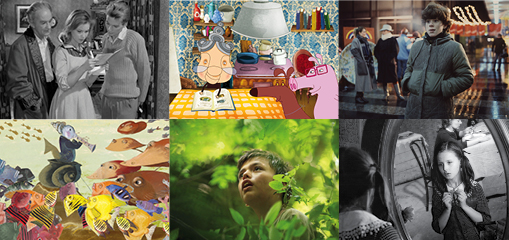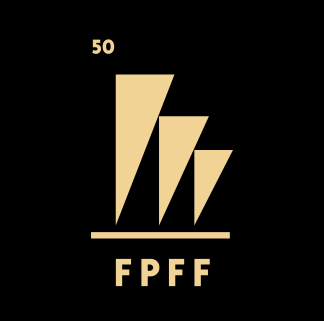Gdynia for Children. Films for children and the youth at the 39. GFF

For many years, “Gdynia for Children” has been an integral part of the Gdynia Film Festival. This section, the least known to the “adult” audience is at the same time one of those most popular! In record years, 8-9 thousand people watched the films for the young audience in Gdynia!
The Polish film for children and the youth has a long and great tradition. Today’s production of this current is incomparably more modest quantitatively than it was before; however, it remains well known to the viewers of television channels, especially the thematic ones. Each year, a few animated series are created. They then reach mainly the children’s, family and film channels that enjoy well-deserved popularity. While it is extremely rarely that cinema actors’ films for children and the youth are created in Poland. This year, Gdynia Film Festival presents both new Polish productions and the popular classics as well as the interesting, little known and highly valued cinema of the Far East.
This year, the Gdynia Film Festival will present a wide programme of Polish films from the last years. We will see, among others, the feature “Gabriel” by Mikołaj Haremski, the prizewinner of numerous awards at international children film festivals. The most important producers of animated films will show their new and a-few-years-old productions. Studio Miniatur Filmowych will present filmd from the “Mami Fatale” series (directed by Łukasz Kacprowicz) and “Hip-Hip & Hurra” (directed by Elżbieta Wąsik), and Se-Ma-For Produkcja Filmowa – new episodes of the already famous series “Parauszek i przyjaciele” (directed by Krzysztof Brzozowski). It is worth emphasising that those series are currently in the regular television distribution. An interesting proposal has been prepared by the oldest Polish production company – Studio Filmów Rysunkowych w Bielsku-Białej: pilot episodes of “Kuba i Śruba” (directed by Marek Burda) and “Kocidrapka” (directed by Andrzej Orzechowski and Bronisław Zeman). The youngest viewers will see a few episodes of a new, ecological and educational series “Przedszkolaki” by Piotr Furmankiewicz and Magdalena Gałysz. A real treat for the lovers of the Polish school of animation will be two films by Leszek Gałysz who revived on screen the art of his masters – Antoni Boratyński (“Szalony zegar”) and Józef Wilkoń (“Rybak na dnie morza”). The youn viewers will also watch the films from the “Baśnie i bajki polskie” series, produced for many years by the Poznań TV Studio Filmów Animowanych. Popular and liked artistic adaptations of the Polish legends and tales will visit Gdynia: “Kozucha Kłamczucha” (directed by Andrzej Kukuła), “Czarne Licho” i “Dar skarbnika” (directed by Robert Turło), “Szewc Kopytko i Kaczor Kwak” (directed by Andrzej Gosieniecki), “Złota jabłoń” (directed by Joanna Jasińska-Koronkiewicz). And Studio Animacji Filmowej SOL-ANIMA prepared an unusual treat for the viewers – a trailer of “Bolek i Lolek Kosmiczna Przygoda”, the newest adventures of the most popular Polish cartoon heroes in 3D animation.
The “Gdynia for Children” review will be inaugurated with an unusual event – a premiere of a digitally reconstructed version of one of the most important youth films in the history of the Polish cinematography, “Szatan z VII klasy” by Maria Kaniewska. The sound and film image was digitally reconstructed thanks to the patron PKO Bank Polski within the KinoRP project.
In the programme of the youth cinema classics, we will see such titles as: “Pierścień i róża” by Jerzy Gruza, “Cudowne dziecko” by Waldemar Dziki, “Odlotowe wakacje” by Marek Piestrak as well as the famous “Kolorowe pończochy” (“Coloured Stockings”) by Janusz Nasfeter, who is at the same time the hero of the Forgotten Classics section.
It is a tradition of the children and youth section of the Festival to confront the native cinema with the best titles of the world cinematography from the last few or few dozen years. This year, we invite to films from the Far East – Indian, Iranian and Chinese: “Mój koń Avatar”(China, directed by Hou Keming, Liu Shen), two Indian titles: “Harun Arun” (directed by Vinod Ganatra) and “Lukka Chuppi – Gra w chowanego” (directed by Vinod Ganatra) and two Iranian: “Syn Marii” (directed by Hamid Jebelli) and “Zielony parasol” (directed by Nasser Refaie).
Stowarzyszenie Filmowców Polskich (Polish Filmmakers Association) is a co-organiser of the section. The Association has been preparing the children and youth programme in Gdynia for eleven years and seeks the participation of both individual viewers and schools or culture centres. Through those years, “Gdynia for Children” has become an extensive Festival section in which the viewers not only watch films but also participate in workshops, plays, happenings, meetings with filmmakers, and competitions. Many viewers – and this is the idea behind the section – come back to the Festival after a few years in the role of attentive, mature viewers, prepared for the reception of a film work.
“Gdynia for Children” is the most extended spaciously section of the Festival. The viewers watch films also in Lębork, Elbląg, Cieplewo and Wejherowo. In Gdynia, the children’s section will take place in the Helios cinema, which in this way begins cooperation with the Festival.
The “Gdynia for Children” children’s film review is implemented within the “Spotkania ze sztuką filmową” (“Meetings with the film art”) project of the Ministry of Culture and National Heritage. “Meetings with the film art” are first and foremost supposed to raise the awareness of the fact that the film is interdisciplinary art that unites literature, plastic arts, music, and that each film image can be placed in a culturally wider context.
The Artistic Director of the Gdynia Film Festival, Michał Oleszczyk, emphasises: “Gdynia for Children is almost a country within a country, a second festival within the one of which the adult receivers think whenever they speak of the film Gdynia. While shows and special events devoted to the youngest viewers are annually visited by thousands of the future cinema-goers and (no doubt) cinema creators. I am extremely pleased that this tradition is continued and that the section is increasingly richer.”


